
Roots
The quiet language of strands, often overlooked, whispers tales of identity, heritage, and the enduring spirit of communities. Within these stories, hair coverings hold a special place, particularly for those with textured hair, serving as silent witnesses to epochs of human experience. These adornments are not merely fabric or ornamentation; they embody a profound connection to ancestral legacies, personal declarations, and the very essence of cultural survival. To truly grasp their meaning, one must first feel the weight of history that each fold and drape carries, understanding how a simple piece of cloth can become a powerful statement.
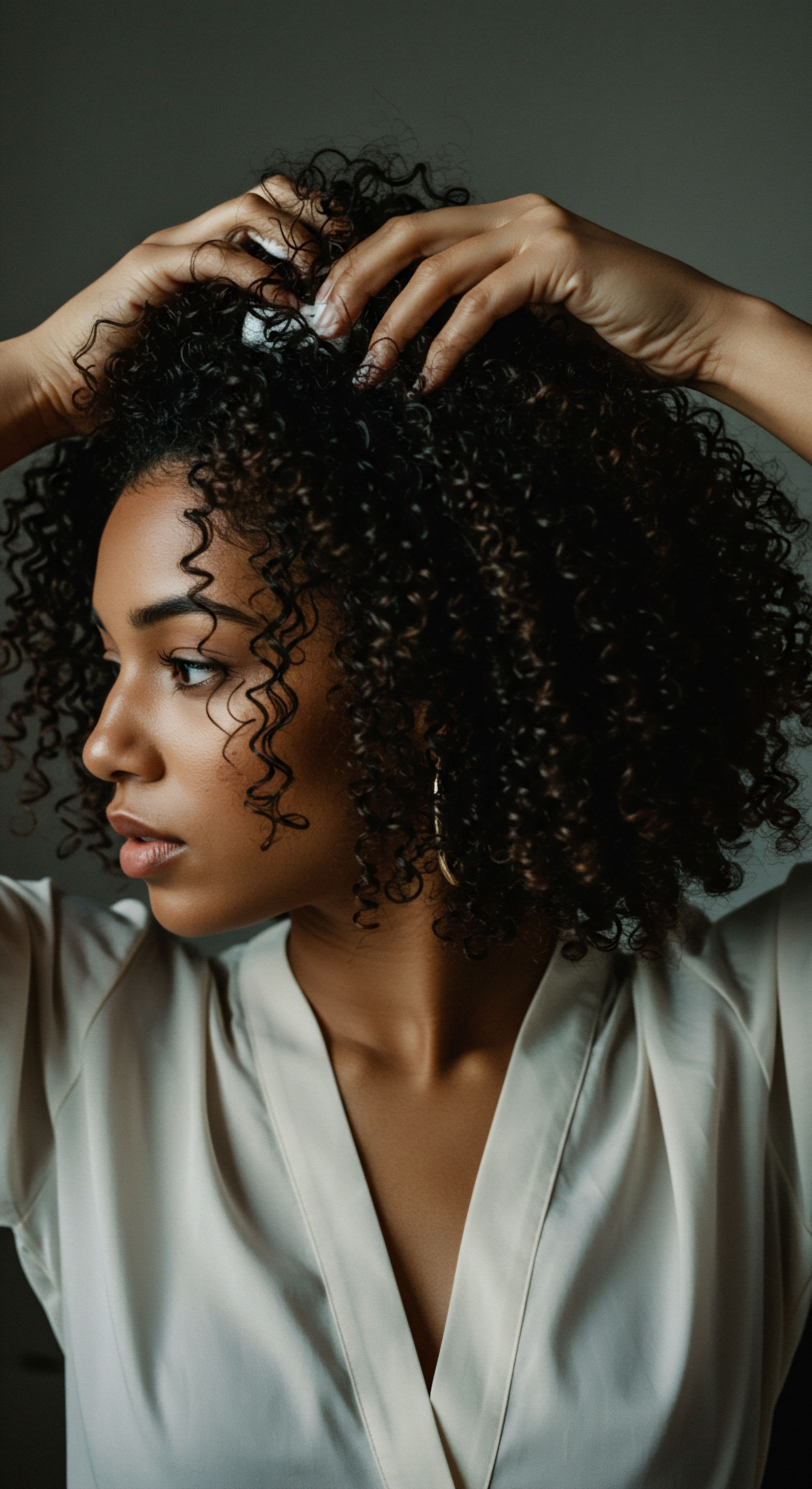
Early Expressions of Identity
Across continents, from ancient African civilizations to Indigenous communities, hair was rarely a simple biological feature. It served as a visual lexicon, a medium for conveying age, marital status, social standing, spiritual devotion, and even tribal affiliation. Before the advent of forced coverings, hair itself was styled with intention, each braid, twist, or adornment a deliberate communication. When external forces later mandated concealment, the coverings themselves inherited this communicative burden, becoming a new canvas for expression and preservation of self.
Hair coverings for textured strands are more than mere accessories; they are vibrant repositories of history and profound statements of identity.

Why Did Hair Hold Such Importance in Early Societies?
The significance of hair in many traditional African societies extended beyond mere aesthetics. It was often seen as a direct conduit to the divine, the most elevated part of the body, thus closest to the heavens. Certain hairstyles could signify rites of passage, mournful periods, or celebratory moments. The meticulous care and styling of hair were communal activities, strengthening bonds and transmitting cultural knowledge across generations.
When individuals were forcibly displaced, particularly during the transatlantic slave trade, their hair became a target. The act of shaving heads upon capture aimed to strip away cultural markers, disorient, and dehumanize. Yet, even in this brutal suppression, the spirit of adornment and identity found new avenues, manifesting in the earliest forms of head coverings in new lands.
- Ancestral Connections ❉ Hair styles often communicated lineage and a link to one’s forebears.
- Social Markers ❉ Status, age, and marital standing were frequently conveyed through hair arrangements.
- Spiritual Significance ❉ Hair was often considered a sacred aspect, connecting individuals to higher realms.
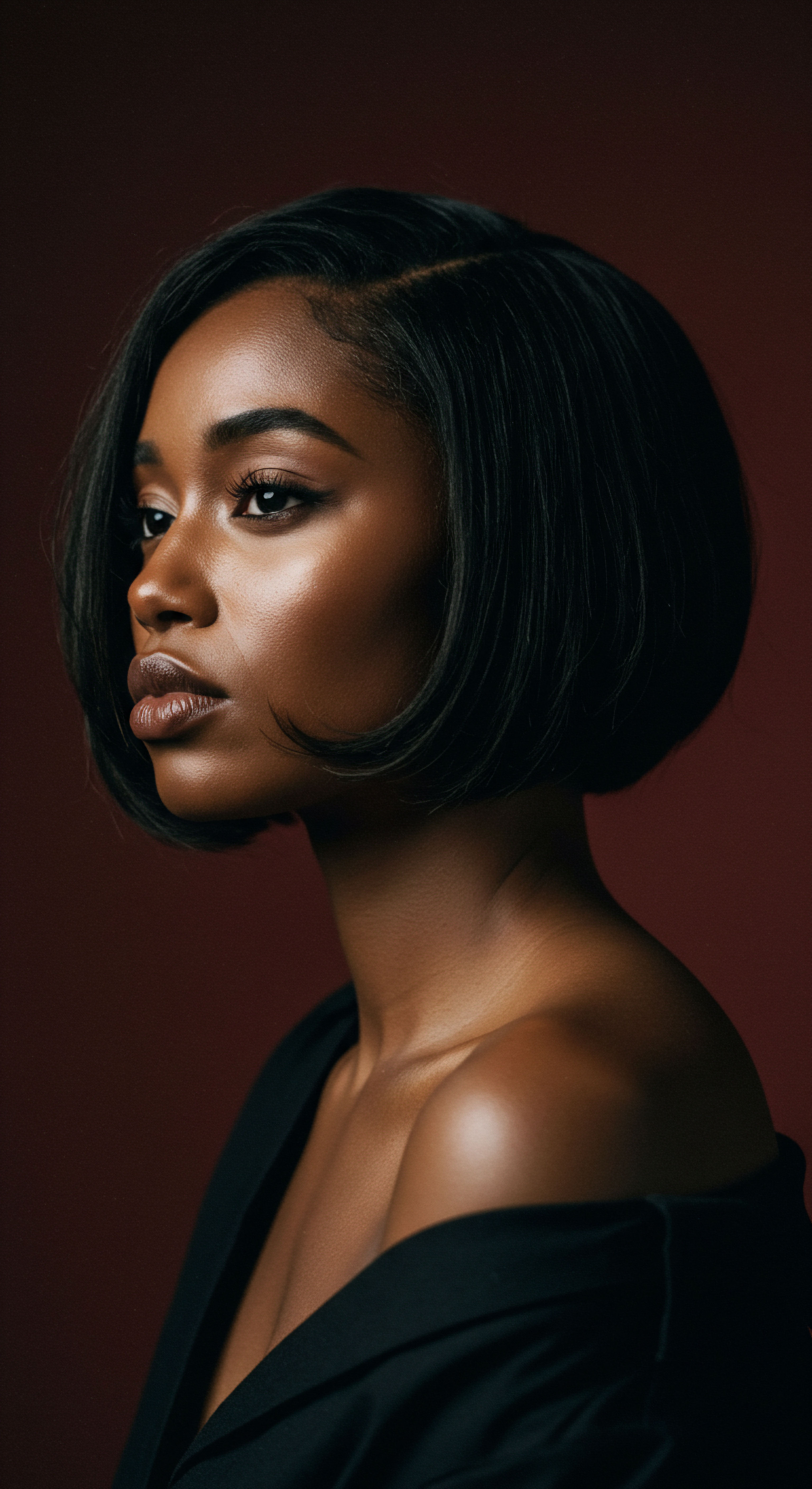
The Dawn of Necessity and Defiance
The journey of hair coverings for textured strands takes a poignant turn with the transatlantic slave trade. In the Americas, enslaved African women were often compelled to cover their hair. This was not solely for practical reasons, such as hygiene or protection from the elements during arduous labor. It served as a deliberate tool of oppression, aiming to strip away dignity and erase cultural distinctions.
The imposed headwrap, initially a symbol of servitude, quickly began to transform under the ingenuity and resilience of those forced to wear it. The spirit of self-determination, though suppressed, found ways to manifest.
In a powerful instance, consider the “Tignon Law” of 1804 in Louisiana. This decree mandated that Afro-Creole women, free or enslaved, cover their hair with a tignon, a knotted headdress, to prevent “excessive attention to dress”. This law sought to diminish their perceived social standing and quell their striking beauty. However, these women, with their indomitable spirit, subverted the law’s intent.
They fashioned their tignons from vibrant, luxurious fabrics, adorning them with elaborate designs and tying them in artful, towering arrangements. What was intended as a mark of subjugation became a dazzling display of style, resistance, and a celebration of their unique identity, outshining their Caucasian counterparts. This historical example underscores how hair coverings, born from duress, were reclaimed as expressions of autonomy and creative defiance.
| Period Pre-Colonial Africa |
| Context of Use Traditional daily wear, ceremonial attire |
| Underlying Meaning Social status, marital status, age, spiritual connection |
| Period Slavery Era (Americas) |
| Context of Use Forced covering, practical necessity during labor |
| Underlying Meaning Initial symbol of subservience, later resistance |
| Period Post-Slavery Era |
| Context of Use Stereotype of "Mammy" figure, cultural preservation |
| Underlying Meaning Complex symbol of domesticity and quiet dignity |
| Period The meanings of hair coverings have evolved, reflecting shifts in societal power and individual agency. |
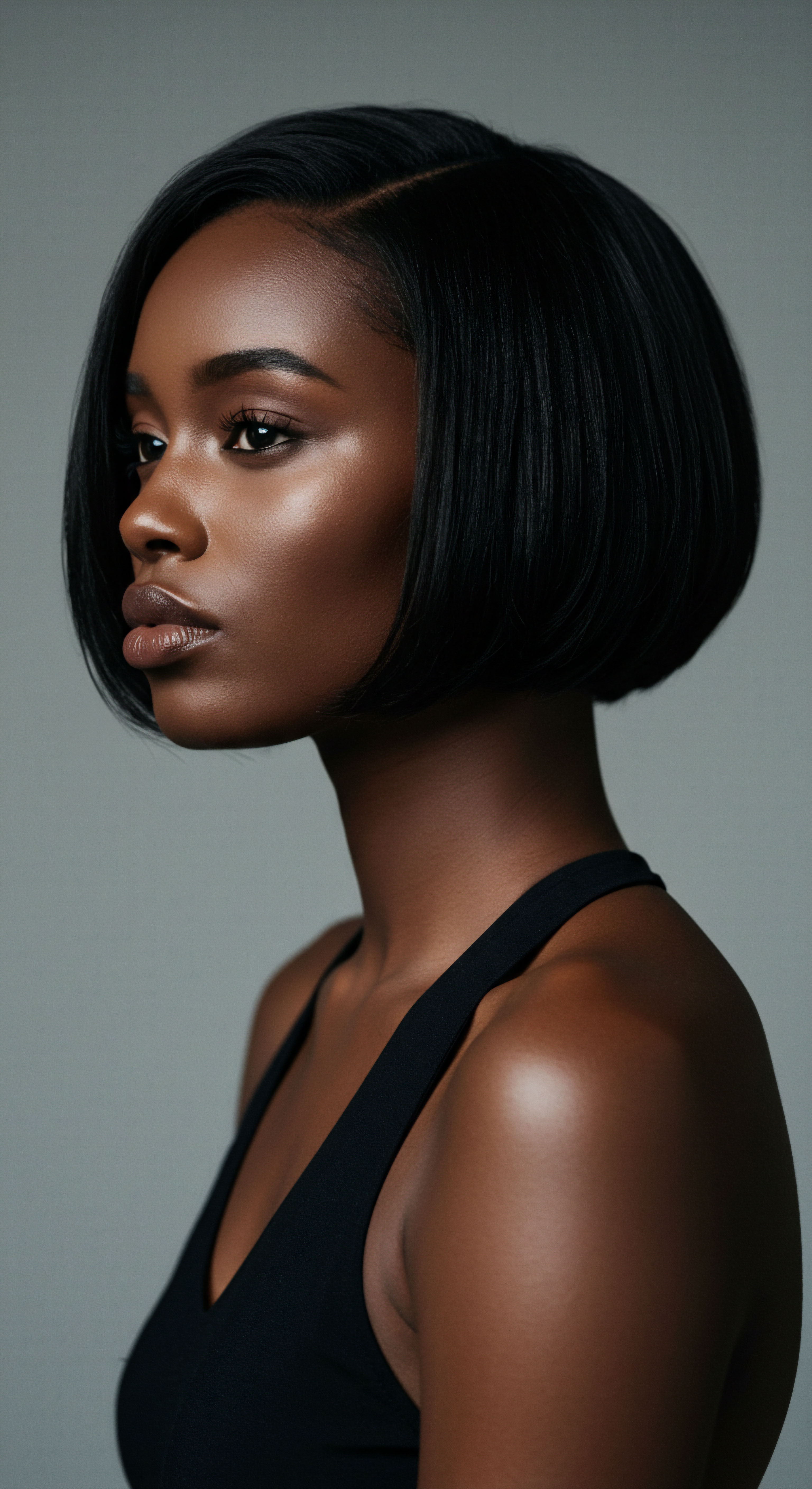
The Language of the Headwrap
The headwrap, in particular, carries a deep and layered history within the African diaspora. Its origins trace back to various West African cultures, where it conveyed messages of status, wealth, and spiritual adherence. When brought to the Americas, it retained some of these original connotations while acquiring new ones shaped by the realities of enslavement and its aftermath.
It served as a uniform of communal identity for millions, and at its most elaborate, became a “uniform of rebellion,” signaling resistance to the loss of self-definition. This paradox – a symbol of oppression becoming a beacon of defiance – speaks volumes about the enduring power of human spirit and cultural resilience.
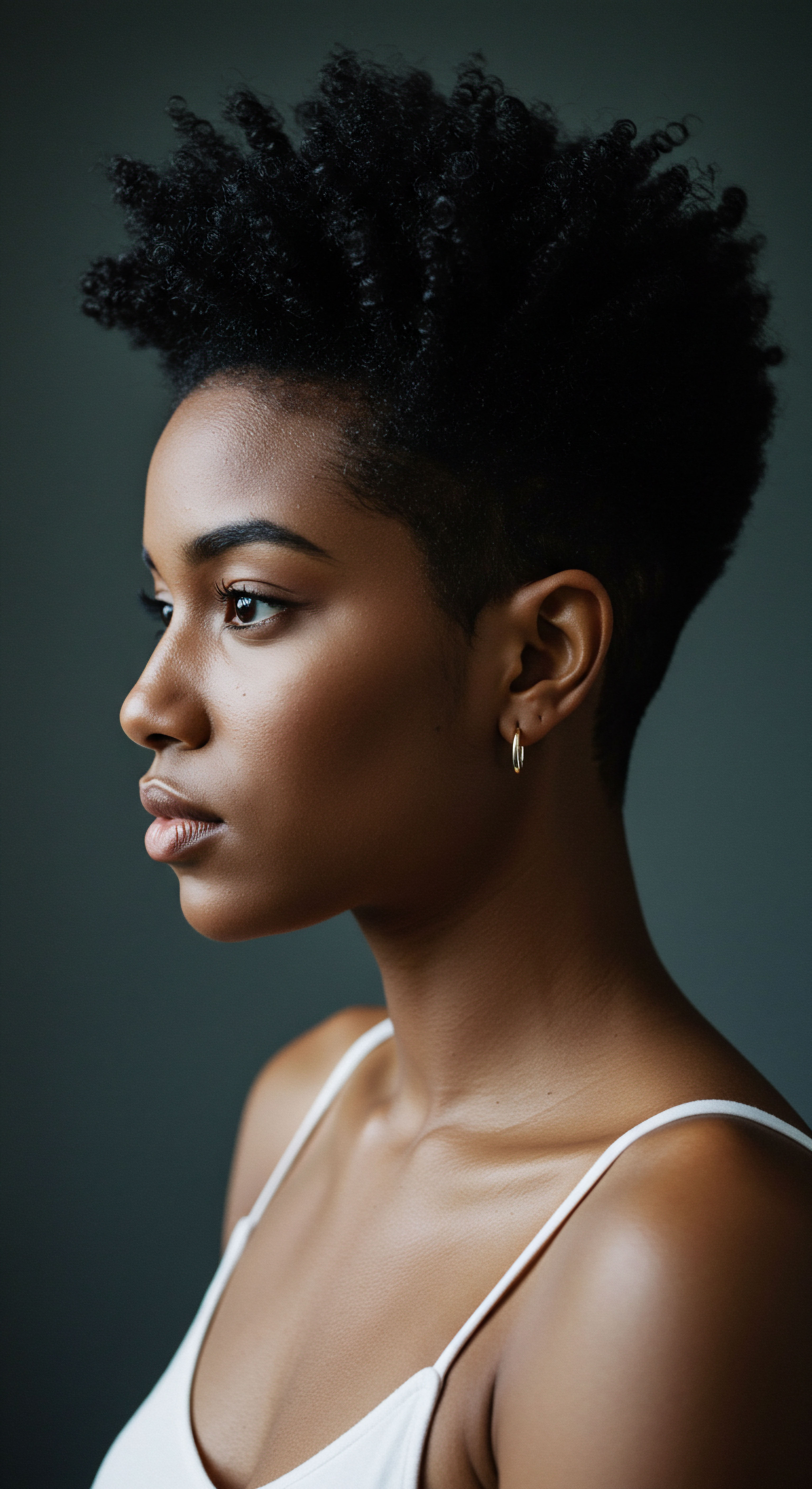
Ritual
Stepping beyond the foundational understandings, we find ourselves at the threshold of daily practice, where the historical weight of hair coverings meets the gentle cadence of contemporary life. This section considers how these coverings, once born of necessity and defiance, have been folded into the intimate rhythms of textured hair care and self-expression. It is a space where the practical meets the profound, where ancient echoes blend with modern routines, all guiding us toward a more connected understanding of our strands.

The Daily Dance of Protection
For many with textured hair, the act of covering one’s hair is not a mere fashion choice; it is a fundamental element of a thoughtful hair care regimen. This practical aspect is deeply rooted in the unique structural characteristics of textured hair, which tends to be more prone to dryness and breakage due to its coiled and curvilinear shape. Nighttime coverings, such as satin bonnets or silk scarves, offer a protective sanctuary, minimizing friction against abrasive pillowcases that can strip moisture and cause tangles. This seemingly simple ritual prevents mechanical damage, preserving the hair’s integrity and promoting its health.
The choice of material is not incidental. Cotton, for instance, absorbs moisture, drawing essential hydration away from the hair strands. Silk and satin, conversely, possess a smooth surface that allows hair to glide freely, retaining its natural oils and moisture.
This mindful selection of materials transforms a utilitarian act into a deliberate practice of care, extending the life of styles and contributing to overall hair vitality. The understanding of this delicate balance between material and hair health represents a modern extension of the ancient wisdom that valued hair as a precious aspect of self.

How do Modern Coverings Extend Historical Practices?
While the immediate purpose of a contemporary bonnet may be hair health, its presence on the head connects to a long lineage of covered strands. Historically, coverings shielded hair from dust, sun, and the rigors of daily life. Today, they shield from environmental aggressors, yes, but also from the unseen forces of friction and moisture loss that can compromise delicate coils.
This continuity, from protecting against physical elements to safeguarding against microscopic damage, highlights a persistent, quiet dedication to hair preservation across generations. The modern silk bonnet, therefore, is not a departure from tradition, but rather a sophisticated evolution of it, tailored to the scientific understanding of textured hair’s needs.
- Moisture Retention ❉ Smooth fabrics like satin prevent moisture absorption from hair.
- Friction Reduction ❉ Minimizes mechanical damage and breakage during sleep.
- Style Preservation ❉ Helps maintain styled hair, reducing the need for daily manipulation.

Beyond Protection ❉ A Statement of Self
Beyond their protective qualities, hair coverings continue to serve as powerful visual statements. They offer a canvas for self-expression, allowing individuals to convey their mood, style, or cultural allegiance. The vibrant patterns and diverse tying methods seen in contemporary headwraps speak to a continuation of the subversive beauty witnessed with the tignon.
For many, a headwrap provides a sense of quiet confidence, a connection to a lineage of resilience, and a way to present oneself to the world with grace and authenticity. This personal declaration, though often subtle, holds deep meaning.
The deliberate act of covering textured hair transforms a daily routine into a ritual of care and self-expression.
The act of choosing a particular fabric or tying a wrap in a certain way becomes a daily ritual of identity affirmation. This personal connection is evident in the burgeoning market for headwraps and bonnets, where diverse designs cater to individual tastes while still honoring the historical roots of the practice. This personal agency in selection reflects a reclamation of control over one’s presentation, a quiet rebellion against historical pressures to conform to narrow beauty standards. It is a testament to the enduring power of personal choice within a rich cultural context.
| Material Satin |
| Primary Benefit Reduces friction, retains moisture |
| Hair Type Suitability All textured hair types, especially delicate strands |
| Material Silk |
| Primary Benefit Superior smoothness, breathability |
| Hair Type Suitability Highly beneficial for all textured hair, sensitive scalps |
| Material Cotton |
| Primary Benefit Absorbent, breathable (less ideal for hair) |
| Hair Type Suitability Often used for outer layers, but not direct hair contact for protection |
| Material The choice of material significantly impacts the protective and health benefits for textured hair. |
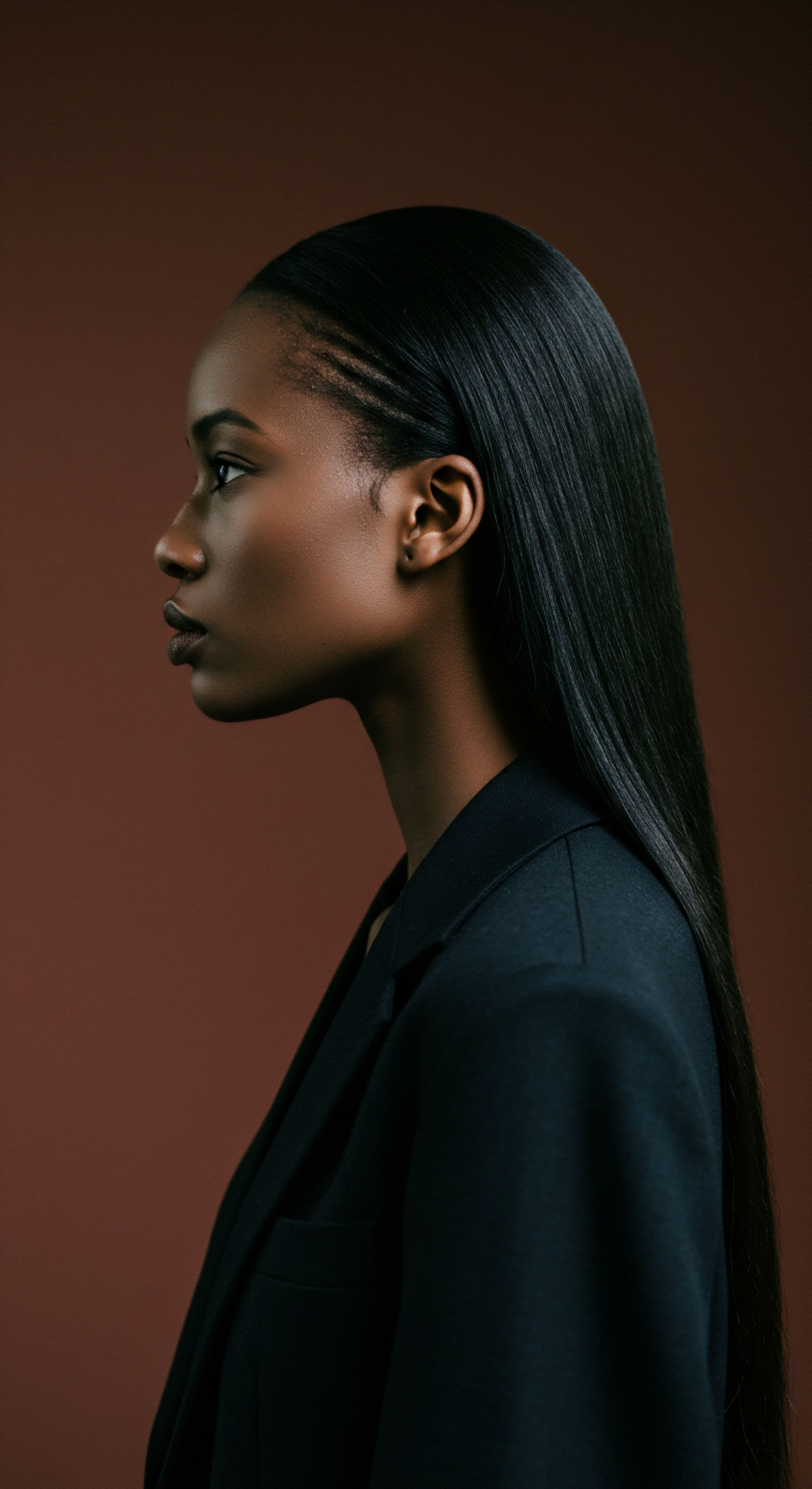
Relay
As we deepen our understanding, the meaning of hair coverings for textured strands expands into a complex interplay of historical burdens, cultural perseverance, and ongoing societal dialogues. This segment invites a more discerning examination, moving beyond the visible to explore the intricate layers of social perception, psychological impact, and the very real data that underpins these experiences. Here, science, history, and lived realities converge, illuminating the profound ways in which a simple covering can hold such weighty significance.
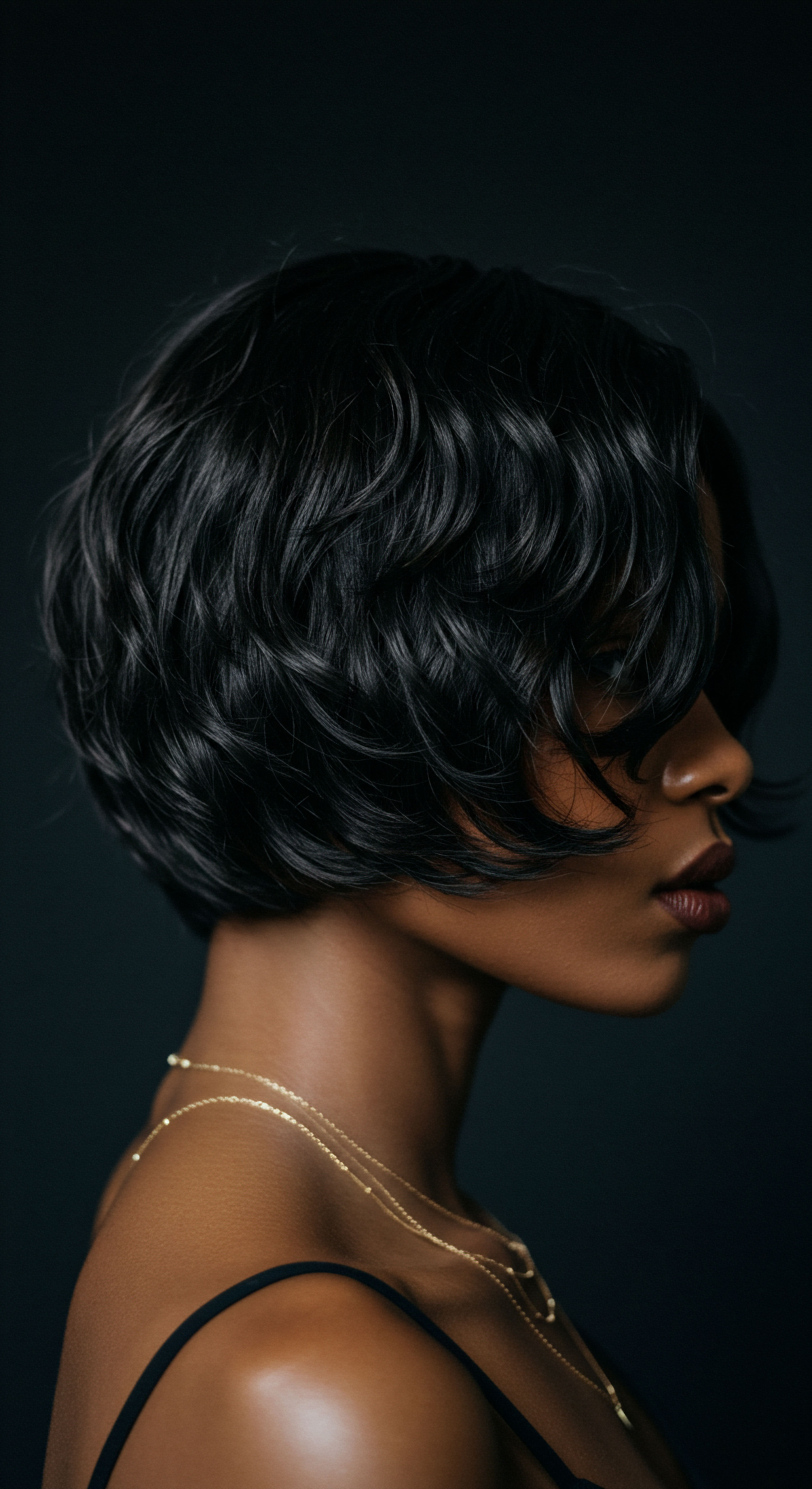
The Weight of Perception ❉ Hair and Professional Spaces
The journey of textured hair, whether covered or exposed, often navigates a landscape shaped by external judgment. Even in contemporary society, the natural presentation of textured hair can encounter bias, impacting individuals in professional and academic environments. A 2023 research study, for instance, revealed a stark disparity ❉ Black women’s hair is 2.5 times more likely than white women’s hair to be perceived as “unprofessional”. This perception is not merely anecdotal; it translates into tangible consequences.
The same study indicated that approximately two-thirds (66%) of Black women adjust their hair for job interviews, with a significant portion (41%) opting to straighten their naturally curly hair. This data point underscores a quiet, yet persistent, pressure to conform to Eurocentric beauty standards, even when cultural expressions are deeply rooted.
Such findings highlight a broader societal challenge where hair, a biological attribute, becomes politicized. Policies in schools and workplaces, even if seemingly neutral, can disproportionately affect individuals with Afro-textured hair. Instances where students are disciplined or adults face professional repercussions for wearing styles like braids, locs, or twists speak to a systemic issue where natural hair is sometimes deemed “unruly” or “unprofessional.” The CROWN Act, a legislative effort in the United States, seeks to address this by prohibiting discrimination based on hair texture and protective styles, acknowledging the historical and ongoing prejudice faced by Black individuals. This legal movement represents a crucial step in validating and protecting the right to cultural expression through hair.
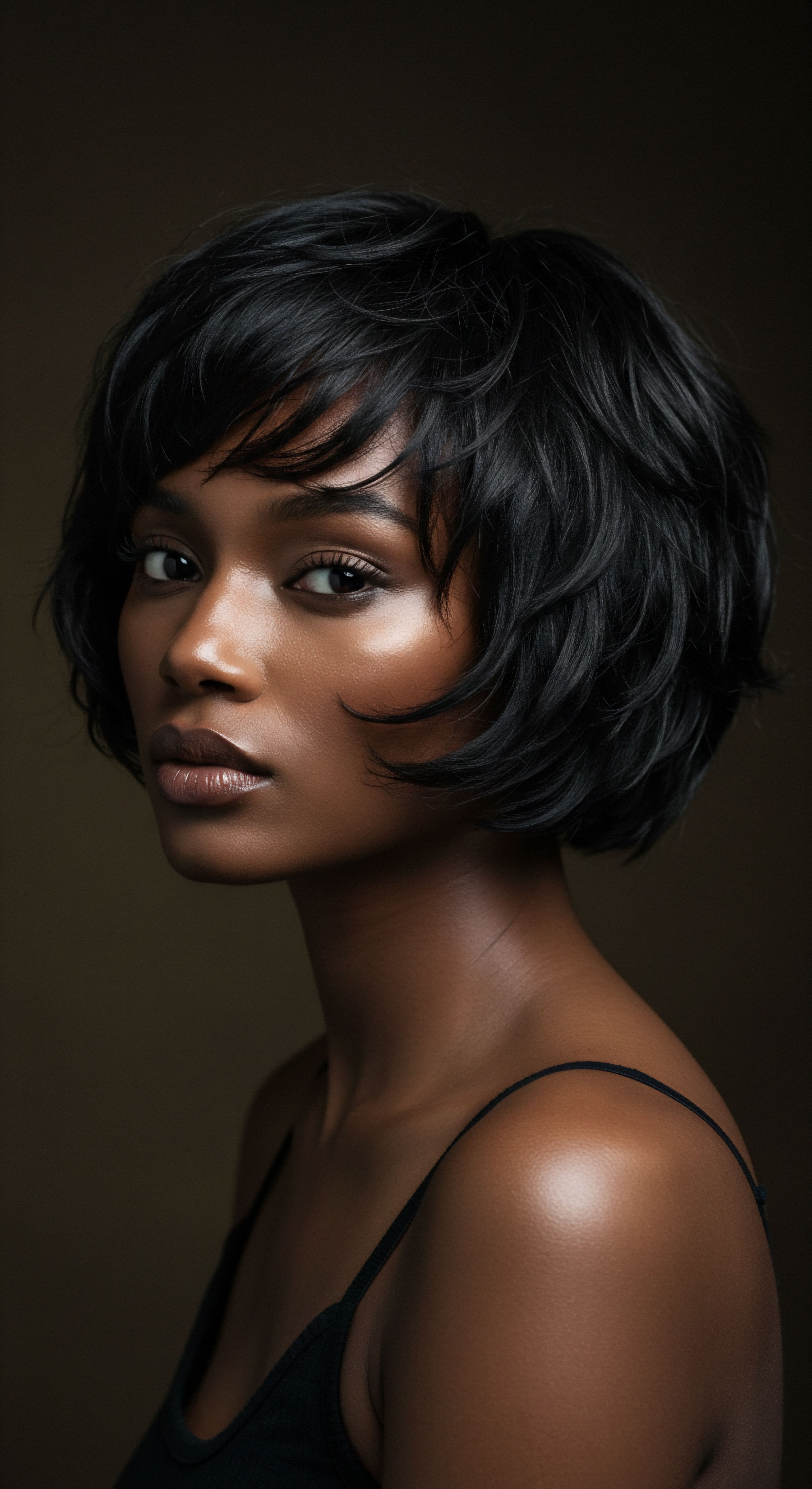
How do Societal Norms Influence the Choice to Cover Hair?
The decision to cover textured hair can stem from a desire for protection, certainly, but also from a calculated response to these societal pressures. For some, a head covering provides a shield, a way to navigate spaces where their natural hair might be scrutinized or misunderstood. It offers a sense of control over external perceptions, allowing individuals to present themselves in a manner that feels both authentic and safe within environments that may not fully appreciate their heritage.
This strategic use of coverings transforms them into tools of self-preservation and quiet resistance against prevailing, often unspoken, beauty dictates. The choice becomes a personal act of autonomy, a negotiation between inner identity and outer expectation.

Beyond the Veil ❉ Cultural Continuity and Spiritual Dimensions
Hair coverings also serve as powerful conduits of cultural continuity, particularly within the African diaspora. They are living archives, carrying forward traditions that predate colonial imposition. In many West African societies, headwraps conveyed not only social standing but also spiritual messages, sometimes serving as a visual connection to ancestral wisdom or religious adherence.
This spiritual dimension has persisted, with head coverings being integral to various religious practices, from the hijabs of Islamic tradition to the white lace coverings in certain Christian denominations and traditional African faiths. The act of covering one’s head can be an act of devotion, humility, or a visible sign of a spiritual journey.
The intricate relationship between hair coverings and textured strands unveils layers of historical resilience, cultural preservation, and ongoing social discourse.
The cultural resonance of headwraps is also evident in their resurgence as a symbol of Black pride and self-acceptance, especially in the wake of the natural hair movement. This movement, which gained significant traction in recent decades, saw Black women embracing their natural textures, often complementing them with headwraps as a declaration of identity and a connection to their African roots. This modern re-adoption is not a return to a symbol of servitude, but a conscious reclamation, transforming the headwrap into a celebrated emblem of heritage, beauty, and liberation. It speaks to a powerful human desire to honor one’s origins and express selfhood on one’s own terms, even when faced with external pressures.
Consider the scholarly perspective that views hair as a “grammar” of culture, where choices about hair, including coverings, are imbued with meaning beyond mere aesthetics. Sybille Rosado (2003) argues that studying this “symbolic grammar of hair” is vital for understanding how culture is shared and transmitted across the diaspora. This perspective highlights that the decisions individuals with textured hair make about their coverings are not superficial; they are profound cultural statements, communicating belonging, resistance, and a deep sense of self. The ongoing presence and evolution of these coverings signify a vibrant, living heritage that continues to shape and inform identity in contemporary society.
- Historical Reclamation ❉ Headwraps, once imposed, are now chosen symbols of pride.
- Spiritual Adherence ❉ Many faiths utilize head coverings as acts of devotion and identity.
- Societal Resistance ❉ Coverings can serve as a shield against discriminatory beauty standards.
| Cultural Context West African Traditions |
| Symbolic Meaning Status, wealth, spiritual connection, marital status |
| Historical or Contemporary Example Specific tying styles indicating lineage or social rank |
| Cultural Context Antebellum American South |
| Symbolic Meaning Forced subservience, later subtle resistance |
| Historical or Contemporary Example The "Tignon Law" and its subversion by Afro-Creole women |
| Cultural Context Modern African Diaspora |
| Symbolic Meaning Cultural pride, self-acceptance, fashion, protective styling |
| Historical or Contemporary Example The natural hair movement and widespread adoption of headwraps |
| Cultural Context Religious Practices |
| Symbolic Meaning Humility, devotion, spiritual identity |
| Historical or Contemporary Example Hijabs in Islam, specific coverings in Ethiopian Orthodox churches |
| Cultural Context The meaning of hair coverings shifts with context, always retaining a deep connection to identity and heritage. |
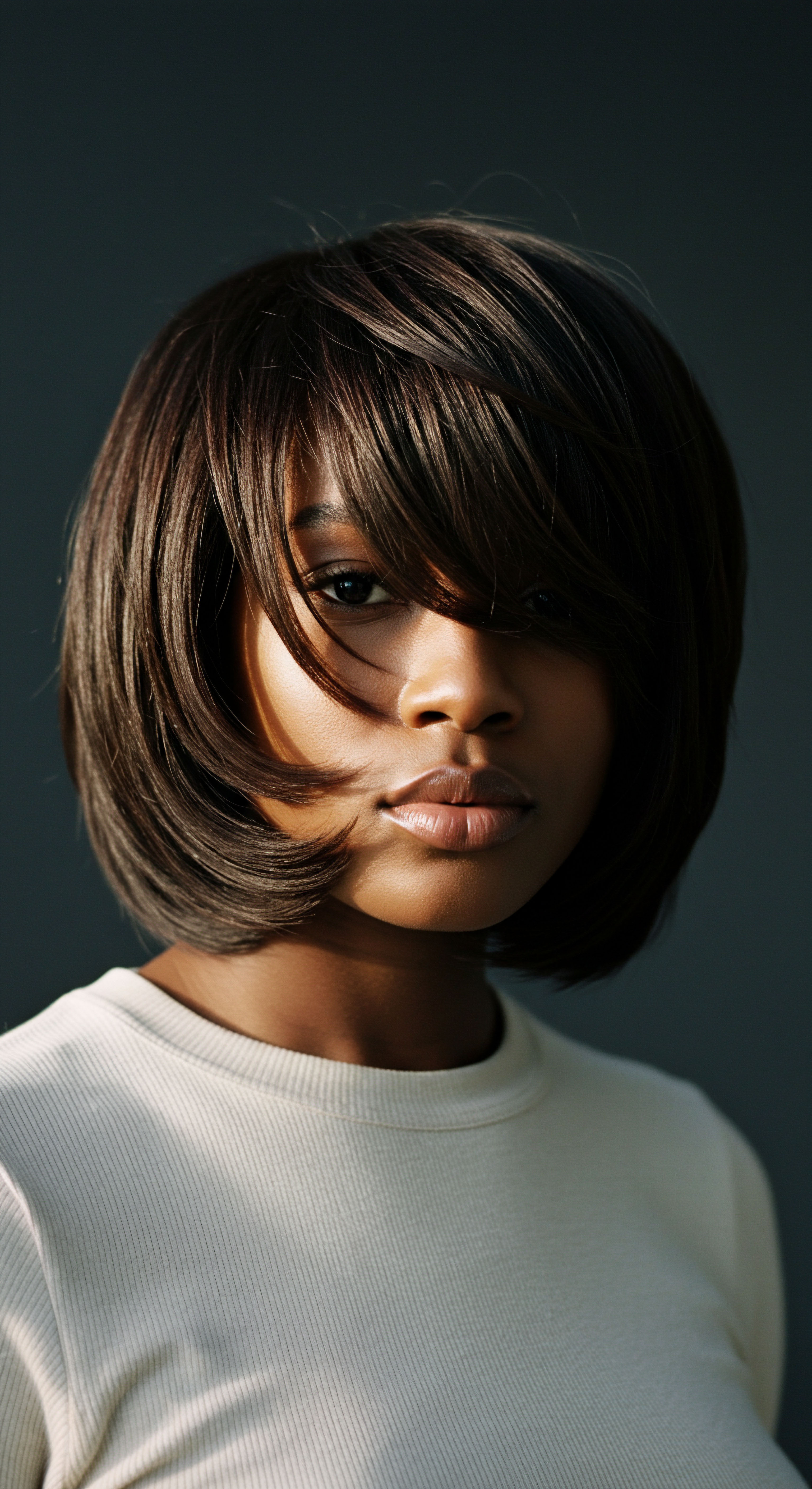
Reflection
The journey through the historical and cultural meanings of hair coverings for textured strands reveals a landscape rich with resilience, quiet strength, and unwavering self-expression. From ancient signals of status to mandated symbols of servitude, and ultimately to declarations of cultural pride and practical protection, these coverings tell a story of constant adaptation and deep-seated identity. They are not static artifacts but living garments, continually shaped by the hands that tie them and the spirits that wear them. The quiet presence of a headwrap or the gentle embrace of a bonnet speaks volumes about heritage upheld, beauty redefined, and personal agency affirmed in every delicate coil.
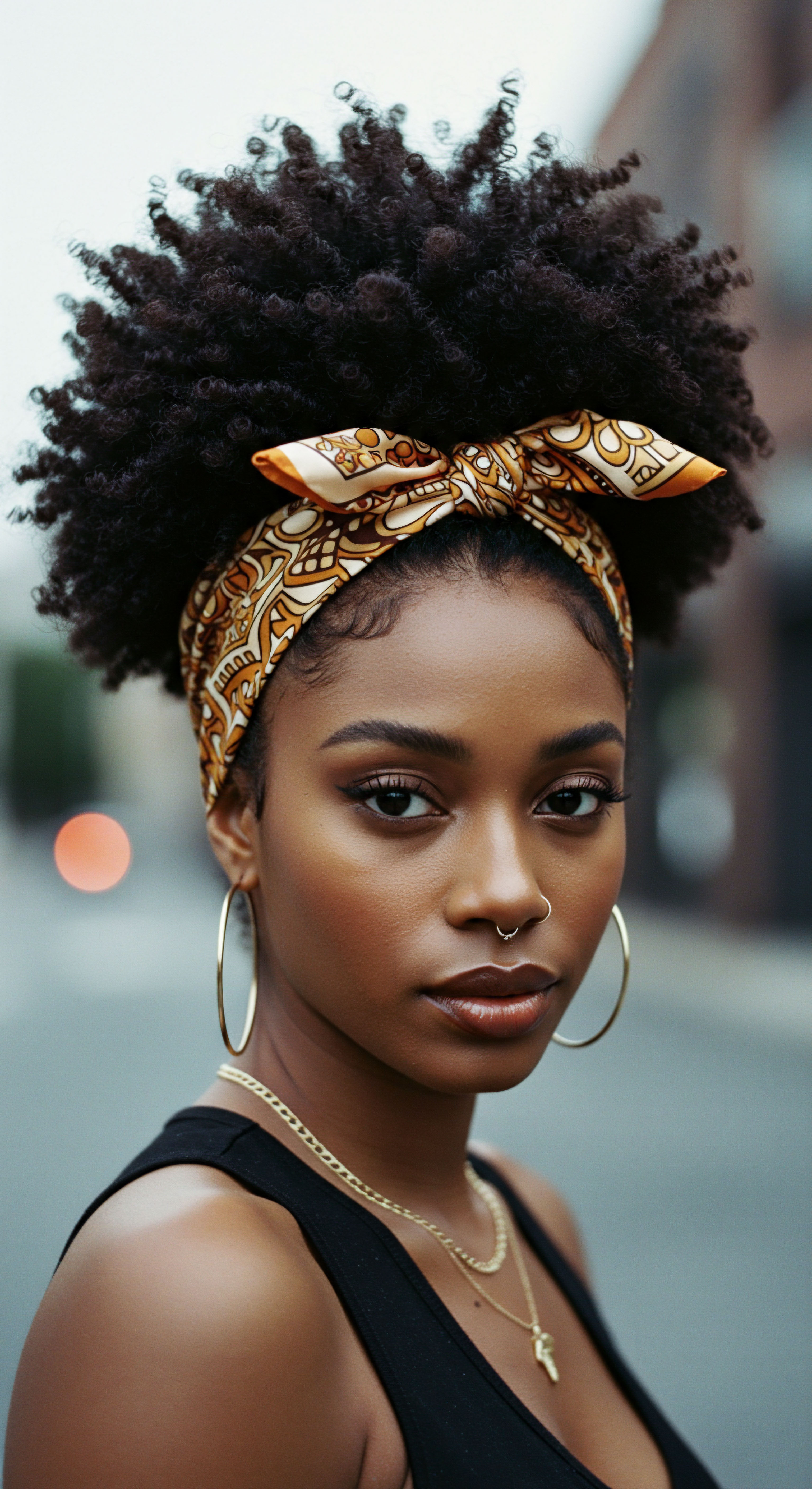
References
- Griebel, Helen Bradley. The African American Woman’s Headwrap ❉ Unwinding the Symbols. Art, Design, and Visual Thinking, 2013.
- Daniel, Nyamekye. Head Wraps. ArtSpeak, 2016.
- That Wasn’t In My Textbook. History of Headwraps Unwrapped. 2022.
- JD Institute of Fashion Technology. HEADWRAPS ❉ HISTORY AND EVOLUTION. 2021.
- sonson. The History of Headwraps and Black Culture. 2021.
- White-Jolivette, Tammy. African American Women’s Experience of Wearing Natural Textured Hair. Walden University Research, 2025.
- Chapman, K. J. Hair It Is ❉ Examining the Experiences of Black Women with Natural Hair. Journal of Black Studies, 2015.
- Byrd, A. D. & Tharps, L. L. Hair Story ❉ Untangling the Roots of Black Hair in America. St. Martin’s Press, 2001.
- Economic Policy Institute. The CROWN Act ❉ A jewel for combating racial discrimination in the workplace and classroom. 2023.
- Nyela, Océane. Braided Archives ❉ Black hair as a site of diasporic transindividuation. YorkSpace, 2021.